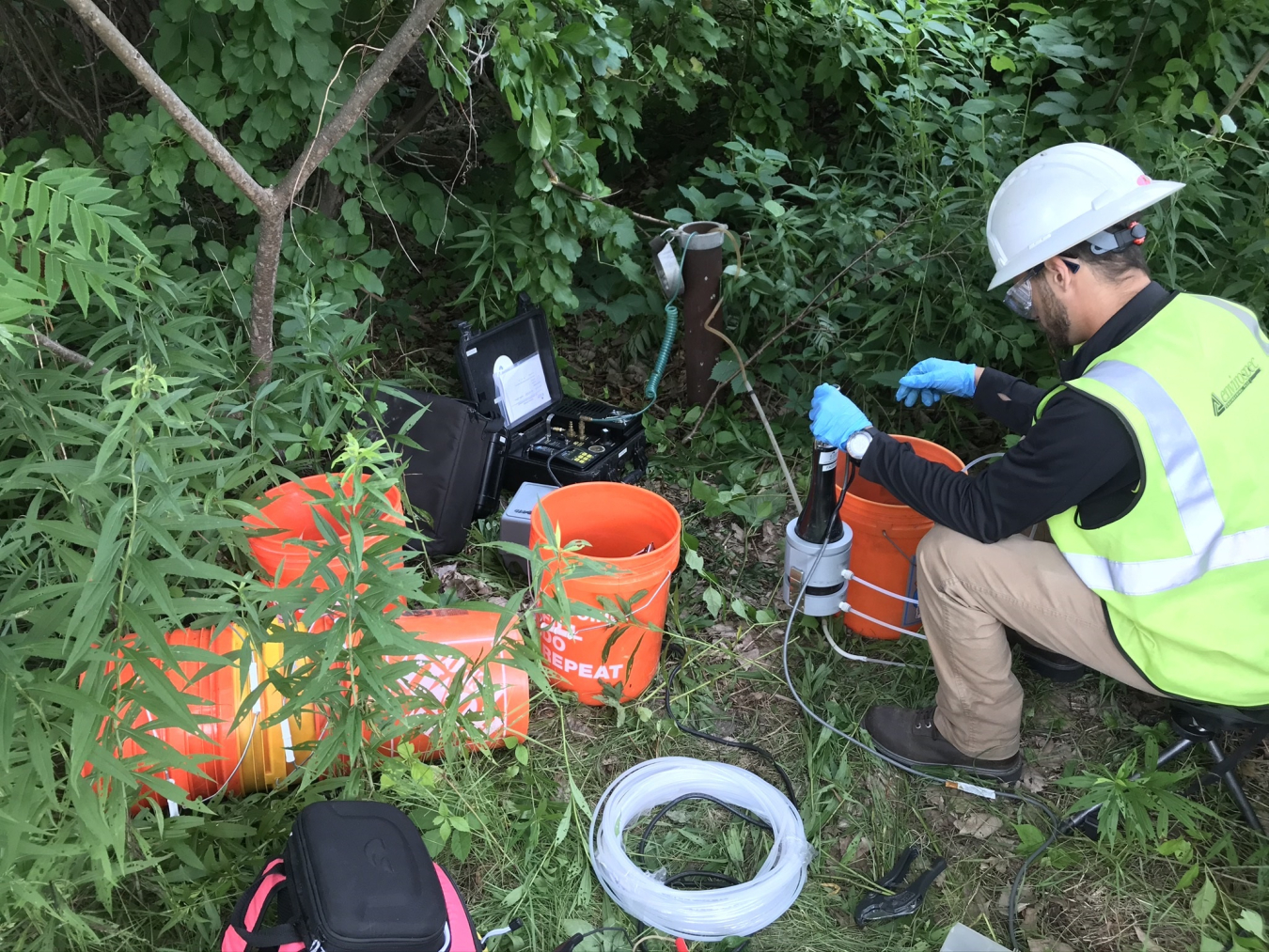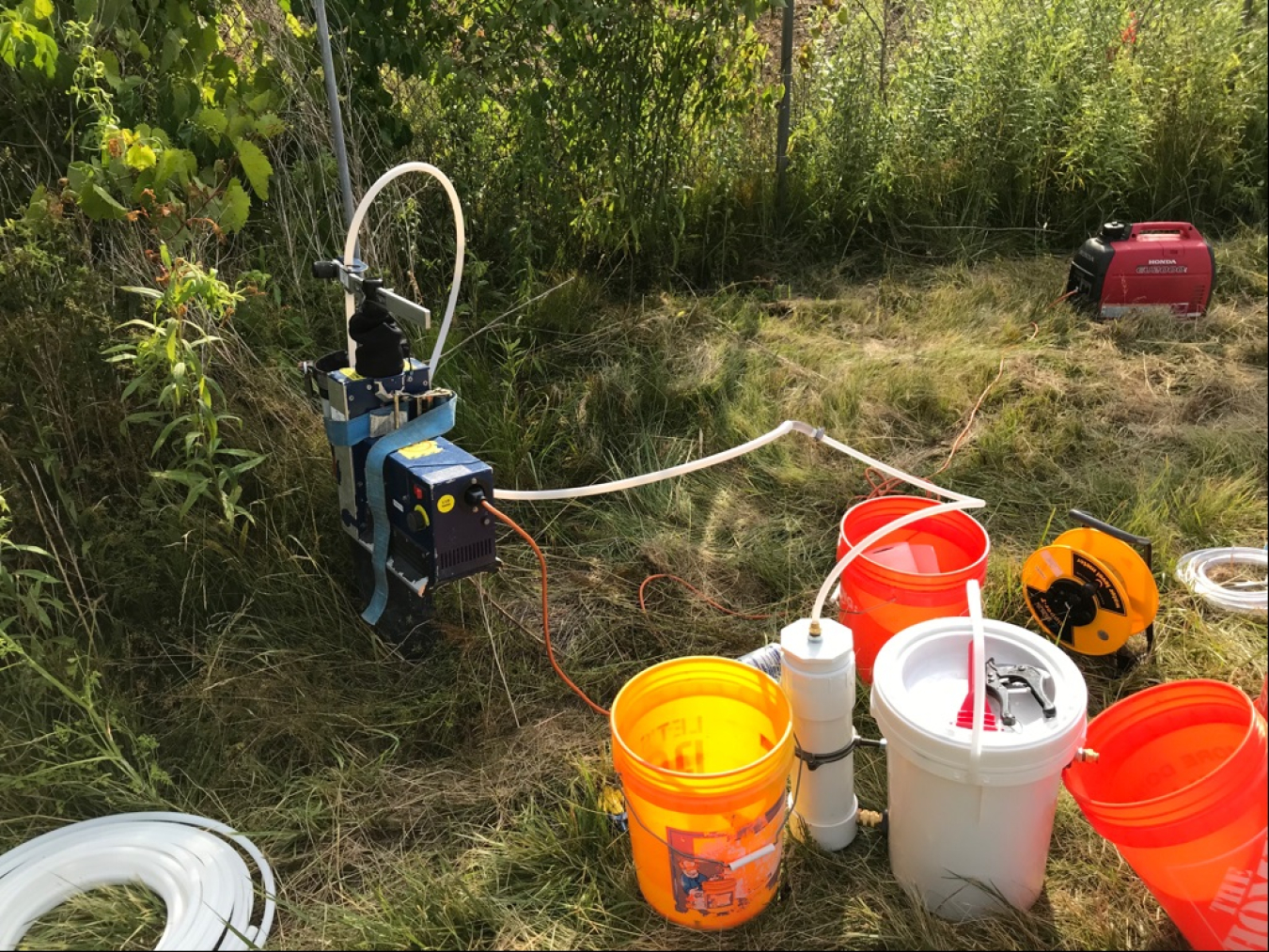Subcontractors in Albany conduct groundwater sampling event at the Colonie, New York, FUSRAP site.
September 2, 2020
A worker repairs a damaged monitoring well at the Colonie site.
In July, the U.S. Department of Energy (DOE) Office of Legacy Management (LM) conducted its first groundwater sampling event at the Colonie, New York, Site — the 100th site added to the LM program. The Colonie site is a 11.2-acre, vacant property near Albany, which transferred to LM for long-term stewardship last fall.
“When we received the remediated site from our partners at the U.S. Army Corps of Engineers [USACE] last year, it was a major milestone for LM, taking on our 100th site,” said LM Site Manager Darina Castillo. “But for me, performing groundwater monitoring and site inspection makes it feel like Colonie is really part of the LM family now.”
To reduce interstate travel because of COVID-19 and to support the regional economy, LM selected local subcontractors, Envirospec Engineering based in Albany, to conduct the groundwater sampling.

A worker samples groundwater using low-flow sampling protocols.
While retaining stewardship responsibilities, LM hopes to sell the Colonie site or transfer the property to another government agency, local authority, community organization, or private party that can realize the site’s potential for future redevelopment as a benefit to the community.
The site was previously owned and operated as a foundry by National Lead Industries (NL) from 1937 to 1984. In 1958, NL began producing items manufactured from uranium and thorium under licenses issued by the U.S. Atomic Energy Commission (AEC) and the state of New York. The AEC contract was terminated in 1968, and the plant began a new era of production with the fabrication of shielding components, aircraft counterweights, and artillery projectiles from depleted uranium.
The New York State Supreme Court shut down the NL plant in 1984, and Congress assigned the authority to clean up the site to DOE. DOE performed cleanup work under the Formerly Utilized Sites Remedial Action Program (FUSRAP) from 1984 to 1997. In 1997, Congress transferred cleanup actions under FUSRAP to USACE. Between 1999 and 2014, USACE completed a large-scale soil removal action at the site and adjacent properties, initiated the groundwater monitoring program, and investigated uranium dust contamination.

During this redevelopment of a well using a surge block, the purged water was filtered through activated carbon.
LM’s long-term maintenance responsibilities at the site include annual inspections of environmental easement areas, groundwater monitoring, managing site records, conducting long-term periodic reviews, and responding to stakeholder inquiries.
Results from Colonie’s first groundwater sampling event will be published on the Colonie, NY, Site webpage.
To learn more about the history of LM’s 100th site, view the Colonie, NY, Site story map.

